How to Visit Rome on a Budget
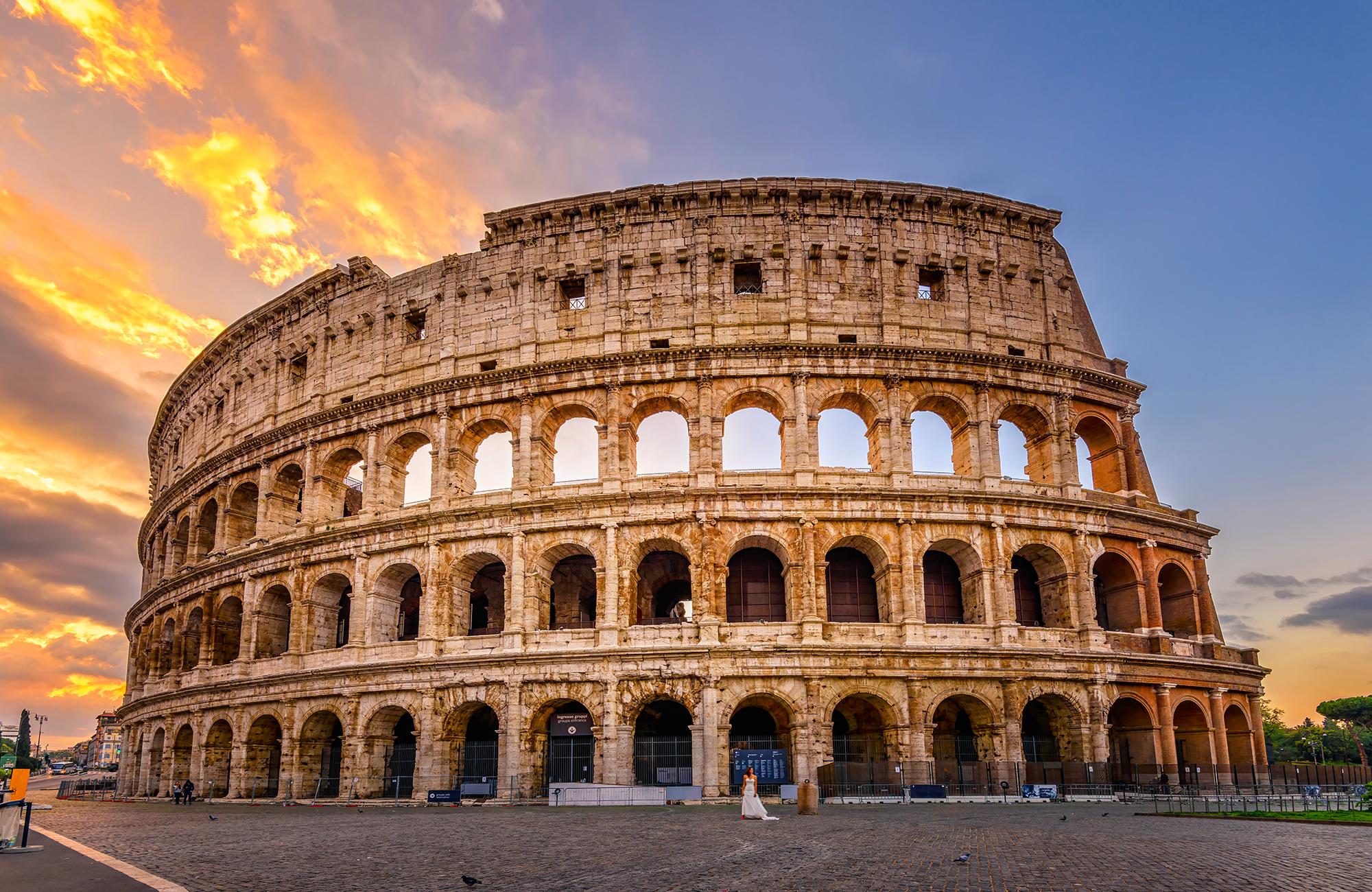
Things to do in Rome
Perhaps more than anywhere else in the world, Rome is a true
blend of old and new. It’s a city that proudly displays its ancient history
while continuing to evolve. It's a lively and breathable city - which means
it's crowded, dirty, noisy, full of kamikaze scooter drivers, and is a bit
rough around the edges. It is also beautiful and its narrow streets and ancient
ruins are certainly romantic and magical - so despite its shortcomings, Rome
continues to be the favorite city of many people around the world.
In this Rome travel guide, we've teamed up with a few locals
to give you a ton of helpful travel tips - including what to see, where to eat,
and what you can't miss.
How Much to Budget to Visit Rome
Of course, you will spend a little more if you stay in a
hotel, so check the current rates on Booking.com to get a better idea of the
prices.
How Long To Visit Rome: 3+ Days
Rome is a big city with lots of things to do and see -
especially if you are passionate about history. Fortunately, many of the main
sites are fairly close to each other, so you can see a lot of them in no time.
At the very least, we recommend spending 3 days in Rome, but
it will feel rushed. You may want to spend 4-5 days + - but even after spending
a week in Rome, you will hardly have scratched the surface.
Rome also has a handful of beautiful day trips, so keep that
in mind as well.
The Good And Bad Of Rome: A Quick Overview
No city is perfect - that's why we like to talk about some
of the good and bad parts of Rome.
The Good
The atmosphere and history: Rome has museums, churches,
squares, fountains, and ancient ruins more spectacular per square foot than
anywhere else in the world. Wherever you go, you will see something amazing.
Art: Rome certainly has no shortage of art and museums -
from contemporary to old.
Good food: you don't have to spend a fortune to eat well in
Rome. All it takes is a little research!
Walking The Streets and Side Streets: Rome has grown and
changed for over 3000 years, so its streets have also grown organically - which
means a lot of small alleys and side streets that are a joy to explore. For
once, you'll love getting lost.
Nightlife: like much of southern Europe, Italians eat late
and stay up later. This means that restaurants, bars, and cafes are open late at
night (then people go to the clubs later).
The Not-So-Good
Tourist Hoards: Tourists everywhere! Rome attracts millions
of visitors each year, so expect to be surrounded by others who want to see all
of the sights. Expect long lines at most attractions - try to book tickets in
advance so you can avoid lines that last for several hours. Summer is the
busiest time of the year, so try to visit in the spring or fall to escape the
crowds.
Pickpocketing: Rome is known to be one of the worst, if not
the worst, cities for pickpocketing and other petty thefts. It’s the worst at
Termini station (Rome’s main station), on the metro and on buses. Be extremely
vigilant at all times. If you can, try not to take anything precious with you.
Tourist restaurants: Rome has a ton of amazing restaurants
serving excellent food at reasonable prices. It also has so many crappy
restaurants serving overpriced junk food to unwitting visitors. Do a little
research and try to get a few blocks away from the tourist spots and you will
find many interesting options.
Dirty: Rome is quite dirty. I mean, it's a big city so it
shouldn't be too surprising. But many people are surprised to see garbage and
graffiti everywhere.
Hot summers: Temperatures in Rome can be quite brutal in the
middle of summer. Many hostels and hotels do not have air conditioning, which
can cause problems for some people.
Where to stay in Rome
In general, there are really no "bad" places to
stay in Rome, so anything near the center should be fine - but there are
certainly "desirable" places that we will cover. In addition, most
sites are centrally located so you are never far from things. Of course, you
will save money if you stay outside of the city center, but you will have to
deal with travel.
Here is a short guide to the neighborhoods to visit:
 Centro Storico
Centro Storico
The historic city center - the area is actually divided into
small areas, but we will treat it as a single area for simplicity. You are
surrounded by the best of Rome. It is obviously the most expensive area to stay
for tourists and it is crowded. But it's hard not to like staying here.
Trastevere

If you are looking for a more local atmosphere without
having to travel far from the center of Rome, we suggest you stay in the
Trastevere district. This trendy bohemian enclave is filled with old-world
charm, excellent restaurants, cool bars, and a lively nightlife atmosphere.
Termini
The area around Termini Station is a bit rough around the
edges, but it also has plenty of cheaper accommodation options.
Jewish Quarter
Monti
Near the Colosseum, you will find the Monti district. It used
to be the red-light district of Rome, but nowadays it is a very trendy district
that still feels authentic and little discovered by tourists. The neighborhood
has a youthful vibe and solid nightlife options.
Vatican City and Prati
There are a few affordable accommodation options near the
Vatican as it is located a bit outside of Rome. It also tends to be less
touristy and more residential.
The neighboring Prati district is known as Rome's “white
collar” district, so there are plenty of high-end residential apartments and
shops. It has a very modern European atmosphere, so it's not a super popular
place for tourists (which means a more laid-back vibe).
Testaccio

Located in the southern part of Rome, the Testaccio district
is a great place to stay for a truly local vibe. The area is known for having
the best food in Rome and its reasonable prices as it is well outside the
tourist area. There is a great youthful atmosphere here that you will fall in
love with. That said, new visitors would probably prefer to stay closer to the
center, as it is not the easiest place to access.
Rome’s Must-See Sights and Attractions (Organized By Neighborhood)
Rome is full of things to see. Seriously ... you can walk
around and see many of Rome's most iconic attractions without ever looking for
them. It would be impossible to list everything here, but we have tried to include
some of the best/most popular attractions.
Ancient Rome Neighborhood
The districts of Centro Storico (the historic center of
Rome) and ancient Rome are the heart of the city and where you will find most
of the most emblematic sites of Rome. This area is also central for tourists -
so you'll have to deal with the crowds, sticky street performers, souvenir
shops, and outrageously expensive restaurants and gelato. That said, it is
still one of the most beautiful places on Earth.
Colosseum, Roman Forum, and Palatine Hill (Must-Visit Sight)
Rome's biggest attraction is the ancient complex of the
Colosseum, the Roman Forum, and Palatine Hill. All these sites are in the
same area and the entrance is covered by a single ticket.
Tickets cost € 12 and
we recommend booking online (+ € 2) so you can avoid the long queue.
Opened in 80 AD, the Colosseum is the largest amphitheater
ever built, and it is an attraction not to be missed (you cannot miss it
because it is huge).
The Palatine Hill is where Rome was founded in 753 BC and
its ruins, which come from several generations of rulers, are among the oldest
in the city. It is located in the center of the seven hills of Rome, so it
offers an excellent view of the city.
Perhaps one of the most important architectural sites in the
world, the Roman Forum was the main square of ancient Rome and today houses
multiple ancient ruins.
Formerly the center of the Roman Republic and the Roman
Empire, the imperial fora were built over a period of a century and a half. It
is located just outside the main Roman forums.
Capitoline Hill and Capitoline Museum
The Capitoline Museum dates back to 1471, making it the
oldest public museum in the world. It presents various works of art belonging
to ancient Rome.
It is also located at the top of Capitoline Hill, which
offers impressive views of the city.
Entrance: 11.50 €
Church of San Giovanni in Laterano
This church was the first basilica built in Rome, and it was
the most important church in Christianity for thousands of years. It continues
to be the main place of worship for the Pope.
National Museum of Rome
The National Museum of Rome is made up of several branches
located in several buildings in the city. These museums mainly focus on
archaeological finds from ancient Rome.
Arch of Constantine

The Arch of Constantine celebrates Constantine's victory
over Maxence at the Battle of Milvian Bridge in 312. It is located between the
Colosseum and Palatine Hill, so you are sure to pass it as you explore.
Church of Saint Peter in Chains (Chiesa Di San Pietro Invincoli)
Although we would not consider this one of the must-see
churches in Rome, this basilica is best known as the home of the statue of
Moses by Michelangelo - which is considered one of the greatest masterpieces
work of Michelangelo. He also has multiple paintings and sculptures to
appreciate.
The Church of St. Louis of the French (Chiesa Di San Luigi Dei Francesi)
Since 1589, it is the French community of the Church of
Rome. He presents many impressive paintings, notably those of Caravaggio. It's
worth stopping by if you're in the area (it's in the center of town, so you'll
probably be near the church a few times during your visit).
Vittorio Emanuele II Monument

The Pantheon was built in 126 AD to honor the pagan gods.
Today it is the most preserved and influential building in ancient Rome - and
it contains the largest brick dome in the history of architecture.
Centro Storico (Central Rome) Neighborhood

The "modern" center of Rome (which is still very
old but not as "old" as ancient Rome) is a mixture of old and new. It
also houses most of Rome's hotels, restaurants and nightclubs.
It is also home to Rome's Termini station - which has a
reputation for being a little rough around the edges, so watch out for
pickpockets and other thieves. It is generally recommended to avoid the area at
night.
Southeast of Termini Station you will find the grainy San
Lorenzo district which is very popular with students (thanks to universities).
Here you will find trendy bars, restaurants, thrift stores and parties.
Pantheon
The Pantheon was built in 126 AD to honor the pagan gods.
Today it is the most preserved and influential building in ancient Rome - and
it contains the largest brick dome in the history of architecture.
Piazza Navona
It is one of the most famous squares in Rome and is
decorated with large fountains and mansions. It is a good place to watch and
discover the works of local artists.
You will also find many restaurants here, but they are all
essentially tourist traps. That said, it is a good place to have a drink (even
if they are too expensive) and people are watching.
The Trevi Fountain (Fontana Di Trevi)

Perhaps the most famous fountain in the world, the Trevi
Fountain attracts huge crowds around the clock. People throw over 3,000 euros
of coins every day, but don't try to steal them - it's a crime (money goes to
charity).
Church Of Santa Maria Maggiore (Basilica Di Santa Maria Maggiore)
This massive 5th-century church is perched at the top of the
Esquiline Hill.
Jewish Ghetto Neighborhood
There's not much left of the old Jewish ghetto, but the area
is now a quiet place during the day and offers an excellent dining scene at
night.
The Great Synagogue and Jewish Museum of Rome (Museo Ebraico)
The Great Synagogue of Rome is the largest in the city and
also houses the Jewish Museum of Rome.
The museum offers information on the
long history of the Jewish population of Rome and works of art from the Jewish
community.
Entrance: 11 €
Vatican City

The Vatican is the world center of Catholicism and is full
of breathtaking sites, relics and museums. It also contains an astounding
amount of tourists, so expect long queues.
Vatican City has a strict dress code, so shorts (above the
knee), short skirts, hats, and bare shoulders are all prohibited at many sites.
St. Peter’s Basilica and St. Peter’s Square
This Italian Renaissance church in the Vatican is considered
by many to be the most emblematic church in Rome. You can also consult the tomb
of Saint-Pierre, located under Saint-Pierre basilica.
St. Peter's Basilica is the largest church in the world and
an example of world-class Renaissance architecture. Admission to Saint-Pierre
is free, but you can pay extra to avoid the queue or take a guided tour.
We suggest you visit the dome of Saint-Pierre for a
breathtaking view of the city - tickets are € 8 for the stairs and € 10 for the
elevator.
Entrance into the main church area is free.
The Vatican Museum and The Sistine Chapel
Vatican museums contain over 70,000 masterpieces of
painting, sculpture and other works of art collected by popes over the
centuries - including the Sistine Chapel.
The basic ticket (which includes both attractions) is € 17
but there is an additional € 4 to book online - which is highly recommended.
Book your tickets on the official Vatican website.
Castel Sant’angelo and Museo Nazionale Castel Sant’angelo
This castle was built as a mausoleum for the Roman emperor
Hadrian but was then converted into a fortress to protect the popes. Nowadays,
it's a museum and a fun place to explore for an hour or two.
In front of the castle is a beautiful pedestrian bridge
built in 134 AD which spans the Tiber. The bridges 10 angel statues help make
it one of the best walks in Rome.
Entrance: 7 €
Trastevere Neighborhood
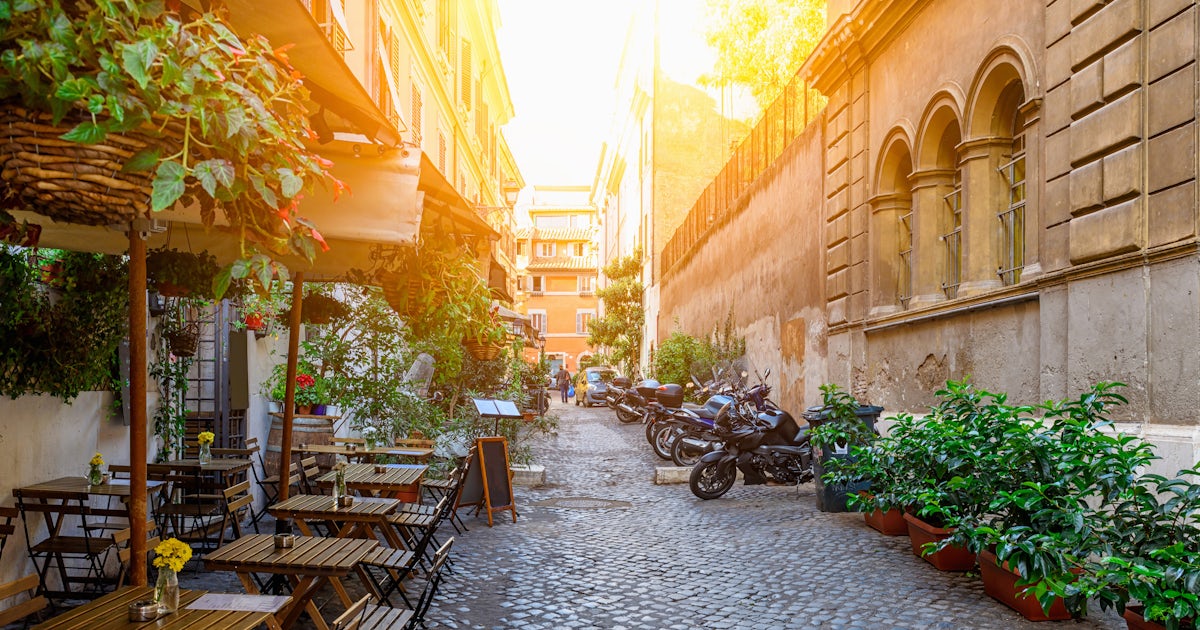
The neighborhood also has a solid nightlife and an
economical restaurant / pub scene thanks to its multiple universities.
The Tiber Island (Isola Tiberina)
The Tiber Island is an island located on the Tiber in Rome
and it is only 300 meters long. In addition to the old buildings on the island,
it also has the oldest bridge in Rome.
Gianicolo Hill
Located behind the Trastevere district, Gianicolo Hill is
the second highest hill in the city and offers views of just about all of
Rome's main sights. It’s a great place to watch the sunset and then go down the
hill to dine in Trastevere.
North Central Rome Neighborhood
Located in the north of Rome, this area is where you will
find the Villa Borghese, the emblematic Spanish Steps and the elegant districts
of Parioli and Salario.
Galleria Borghese and Borghese Gardens
Galleria Borghese is located in the Borghese Gardens and is
considered to be the best art gallery in Rome.
In addition, the Borghese garden is a huge park full of
green spaces, beautiful gardens and a small lake.
Entrance to the Galleria Borghese: 11 €
Piazza Di Spagna and Spanish Steps
Piazza di Spagna is located at the bottom of the Spanish
Steps in 135 steps and is one of the most famous piazzas in Rome.
Piazza Del Popolo
At the foot of the Borghese gardens, you will find the
immense Piazza del Popolo (the People's Square). The main painting is an
Egyptian monolith which dates back to 10 BC. The place attracts a lot of people
but it is so large that it rarely feels too crowded. It is also a great place
to watch people.
National Gallery of Modern Art (Galleria Nazionale D’arte Modena)
Entrance: 8 €
Aventino and Testaccio Neighborhood
Get an authentic taste of how true Romans live in the
off-the-beaten-path neighborhoods of Aventino and Testaccio. Here you will find
locals who enjoy their days and who host excellent cuisine
The Papal Basilica of St. Paul Outside The Walls (Basilica Di San Paolo Fuori Le Mura)
Besides having a super catchy name, it is one of the four
papal basilicas in Rome and one of the largest churches in the world. Much of
this 4th century church was destroyed by fire in the 1800s, but it was rebuilt
to its former glory.
Free and Paid Walking Tours
I'm still a fan of walking tours - it's a great way to learn
more about the history of the city, and it's an easy way to get a "terrain
layout" so you know where come back and visit.
The Best Restaurants, Cheap Eats, and Gelato
That said, Rome is a major tourist destination, so there are
a lot of inferior restaurants. But don't worry because we have teamed up with
Devour Tours Rome and a few other locals to bring you their best
recommendations.
Mercato Centrale Food Hall
:max_bytes(150000):strip_icc()/MercatoCentraleFoodHall_MassimoBorchi_AtlantidePhototravel-8fcac424de1f49c2bfd12694498311fb.jpg)
The Mercato Centrale is the market / dining hall of Rome and
is a must visit during your trip. Although you can buy fresh produce here, the
main attraction for most visitors is the stalls selling prepared meals. You can
find most of the traditional dishes of Rome here as well as international
dishes. They also have local beer and wine.
Where to Get Great Pizza
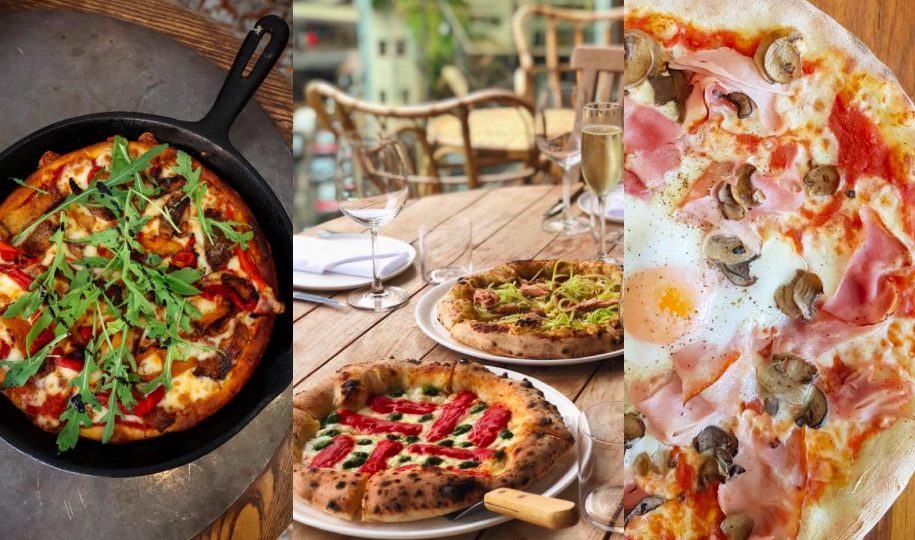
Pizzarium: This hole in the wall is Anthony Bourdain's
favorite pizza place in Rome. They probably serve the best pizza slices in
town. This place is covered in just about every guide, so it's always busy (but
worth the wait).
Pizzeria ai Marmi: historic and unadorned pizzeria. The
local favorite and he is always busy. They have an open kitchen so you can see
the pizzas being prepared. It is one of the best pizzas in Trastevere.
The Gatta Mangiona: The Gatta Mangiona serves a delicious
pizza which is a mixture of both Roman and Neopolitan pizza. They are a
neighborhood favorite, so booking in advance is wise.
Da Agostino: Da Agostino is a place to take away with no
frills. The staff are super friendly and they make great pizza with great
ingredients. It is worth eating here if you are in the area.
Al Grottino: an old-style pizzeria opened in 1936. It's a
real neighborhood, so it seems that the staff know most of the locals by name
(and the waiters can be a little gruff).
Emma Pizzeria: A great example of Roman style pizza in a
slightly elevated setting. It is also located in the center of Rome, so you
won't have to travel far. Reservations are not required but you may want to
make them.
Traditional Roman Food
Looking for classic Roman style food? Here are some of our
favorite dishes that we recommend you check out when you visit a traditional
restaurant:
Cacio e Pepe: My personal favorite dish. Cacio e Pepe
translates to "cheese and pepper" - it's simple but delicious. Here
is an excellent guide from Livia Hengal where she shares her favorite spots.
Carbonara: you can't go wrong with a simple traditional carbonara
made from egg, hard cheese, pork cheek and black pepper.
Supplì: These little balls of fried rice are stuffed with
various things like tomato, meat or cheese. These are cheap and tasty street
treats, so try a few different flavors. We recommend Supplì Roma for the most
authentic experience but we also like Pizzarium and Trapizzino.
Bucatini all’Amatriciana: this is yet another simple but
delicious pasta dish made with tomato sauce, cured pork cheek and pecorino
cheese.
Carciofi alla Giudìa: One of the most famous and delicious
Roman Jewish dishes are fried artichokes. That said, artichokes are only in
season in the spring, so it's best to avoid this dish outside of spring.
American In Rome has an excellent guide to finding the best artichokes (fried
and uns Fried) in Rome.
We are also linked to
some solid sources:
TimeOut Rome does a good job of staying on top of the best
restaurants and bars.
Spotted by locals: Rome always has great advice for
budget-conscious travelers.
American In Rome has a nice article on inexpensive food in
Rome which is a bit outdated but the places it recommends are always solid.
The Roman Foodie also has an excellent article on
inexpensive dishes in Rome.
Much Loved Gelato Shops
Gelato is so good and Rome has a lot of incredible options.
Here are some local favorites:
Gelateria dei Gracchi: Lots of seasonal artisan flavors as
well as many classics. They also have dairy-free and gluten-free options.
Excellent central location.
Gelateria del Teatro: One of the best gelato places in the
center of Rome. They offer a lot of interesting flavors. Worth a visit.
Otaleg: One of the most popular ice cream shops in Rome is
Otaleg, so you should stop 100% when you are in Trastevere.
Fiordiluna: Another excellent artisan ice cream shop in the
Trastevere district which has existed for over 25 years.
Il Gelato di Claudio Torce: Before, you had to travel a bit
outside of Rome to taste the creations of master ice cream maker Claudio Torce,
but he now has a second location just 10 minutes' walk from the Coliseum.
Coffee and Espresso
Imagine you are a local by starting your day with one or two
espressos. Here are some classic coffees.
Sant ’Eustachio Il Caffè: the most famous coffee in Rome
that has existed since 1938 - in addition they roast their own beans. They also
make great pastries. They have outdoor seating, but you will have to pay extra
to sit, so love the locals and eat / drink at the bar.
Tazza d´Oro: Old school classic espresso bar opened in 1946.
Located right next to the Pantheon and they roast their own beans on site.
They're also famous for their granita di caffè - which is an frozen porridge of
espresso, simple syrup, and whipped cream.
Antico Caffè Greco: this 18th century café and its
impressive flowery interior give you the impression of going back in time. It's
a touristy place, so they charge too much if you sit, but the prices are a little
more reasonable if you stand at the bar.



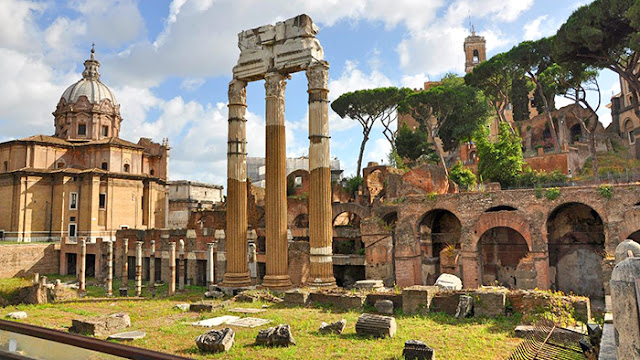
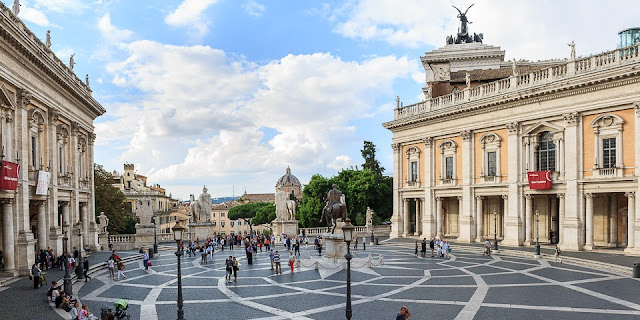






1 Comments
If you're trying to lose fat then you certainly need to start following this brand new custom keto meal plan.
ReplyDeleteTo create this keto diet service, licensed nutritionists, personal trainers, and chefs have joined together to develop keto meal plans that are useful, painless, price-efficient, and satisfying.
From their grand opening in January 2019, thousands of individuals have already completely transformed their figure and health with the benefits a good keto meal plan can give.
Speaking of benefits; in this link, you'll discover eight scientifically-tested ones provided by the keto meal plan.